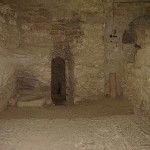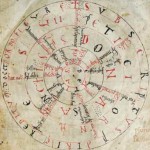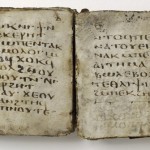New Study Reveals ‘Gospel of Jesus’ Wife’ Papyrus may be Authentic
Was Jesus Married?
A study conducted by Columbia University is comparing the inks used in the Gospel of Jesus’ Wife and other papyri of the time to conclude that it may be authentic.
Mary Magdaleneor Mary of Magdala and sometimes The Magdalene, is a figure in Christianity. Mary Magdalene travelled with Jesus as one of his followers. She is said to have witnessed Jesus’ crucifixion and resurrection. Within the four Gospels she is named at least 12 times, more than most of the apostles. During the Middle Ages she developed a reputation in Western Christianity as being a repentant prostitute or loose woman, however, these claims are not supported by the canonical gospels.
The Gospel of Luke says seven demons had gone out of her,[Lk. 8:2] and the longer ending of Mark says Jesus had cast seven demons out of her.[Mk. 16:9] She is most prominent in the narrative of the crucifixion of Jesus, at which she was present. She was also present two days later, immediately following the sabbath, when, according to all four canonical Gospels,[Matthew 28:1–8] [Mark 16:9–10] [Luke 24:10] [John 20:18] she was either alone or as a member of a group of women the first to testify to the resurrection of Jesus. John 20 and Mark 16:9 specifically name her as the first person to see Jesus after his resurrection.
Mary Magdalene was present from the “beginning of a movement that was going to transform the West”. She was the “Apostle to the Apostles”, an honorific that fourth-century orthodox theologian Augustine gave her and that others earlier had possibly conferred on her. Ideas that go beyond the gospel presentation of Mary Magdalene as a prominent representative of the women who followed Jesus have been put forward over the centuries. Some have considered her as fulfilling a role similar to that of Simon Peter among the male disciples.
Gospel of Thomas, usually dated to the late 1st or early 2nd century, was also among the finds in the Nag Hammadi library in 1945.It has two short references to a “Mary”, generally regarded as Mary Magdalene. The latter of the two describes the sentiment towards female members of the early Gnostics:
Simon Peter said to them: Let Mary go forth from among us, for women are not worthy of the life. Jesus said: Behold, I shall lead her, that I may make her male, in order that she also may become a living spirit like you males. For every woman who makes herself male shall enter into the kingdom of heaven.
When the Gospel of Thomas was written, people commonly assumed that men were superior to women.
The manuscript gives 114 “secret teachings” of Jesus. Mary is mentioned briefly in saying 21. Here, Mary asks Jesus, “Whom are your disciples like?” Jesus responds, “They are like children who have settled in a field which is not theirs. When the owners of the field come, they will say, ‘Let us have back our field.’ They (will) undress in their presence in order to let them have back their field and to give it back to them”. Following this, Jesus continues his explanation with a parable about the owner of a house and a thief, ending with the common rhetoric, “Whoever has ears to hear let him hear”.






